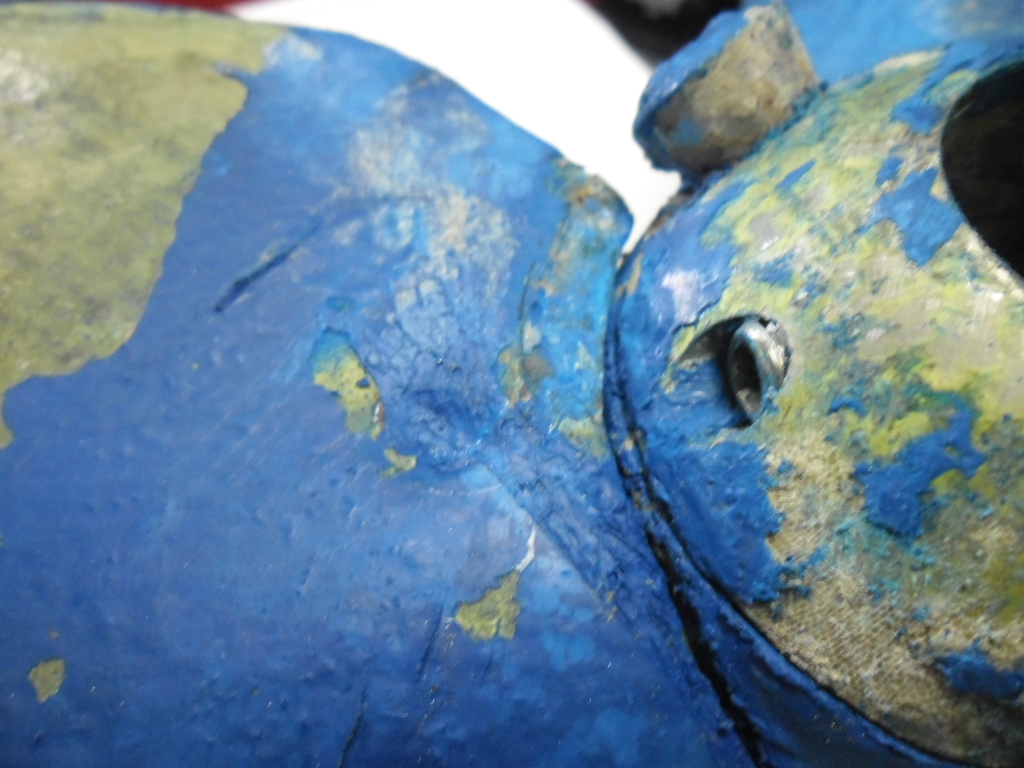Antifouling
To maintain the performance of any propeller it is essential to keep both faces, the leading edges of the foils and in particular the tips clean. Barnacles and weed growth will have a serious impact on motoring performance.
Barnacles will attach themselves to the Zytel blades with the same alacrity as to any other surface subject to fouling.
We do not make recommendations as to any partic
ular antifouling product as we find that particular locations seem to require particular products that are more suited to that particular environment. Water temperature, light, current, salinity, dissolved solids and vessel usage all seem to have a significant impact on antifouling performance.
We recommend painting the whole propeller with a modern ablative antifouling which can be applied directly to the unit. The Zytel™ and Delrin™ require no special undercoats.
While the paint will slowly erode from the tips of the blades over time this approach will still provide the best overall solution to fouling of the propeller.
If not using a soft ablative paint that will wear away quickly with any contact from a moving blade, then care must be taken to ensure that the bottom root surface of the blade does not start to bind on the boss from a buildup of antifouling over time.
All Saildrives require non copper based antifouling. The presence of copper will corrode the aluminium Saildrive housing. Always use the same / similar non-copper antifouling on the propeller as the Saildrive.
NB: Ensure there are no paint runs on the blade – in particular near the sharp leading edge that can cause serious vibration problems.
We recommend painting the blades, the Nose Cone and the tripod casting of length 25 mm or 1" aft of the Nose Cone. Leave other areas of the boss free to prevent interference with the blades.
DO NOT ALLOW PAINT TO FOUL THE REVERSE ROLLERS WHICH MUST REMAIN FREE TO ROTATE AT ALL TIMES:
Any constraints on reverse roller rotation will impact on reverse engagement.
To assist in grease retention over time - place a heavy dash of antifouling over the black polypropylene cap thus sealing the grease point in the upper surface of the later model Tri Rollers as used on the K4 units and K3 units post mid 2014.
This can then be easily removed for subsequent greasing next season. The rotation of the unit in service provides centripetal force that will tend to move the grease radially outwards over time - so sealing the upper surfaces will prevent grease migrating out of the bearing and assist in retaining grease for continuing smooth reverse operation.
PROP-SPEED™ Silicone coating:
We have found from observations over the years of quite a number of units in service that this type of antifoul is very effective when applied to the composite sections of the Kiwiprop™.
It shows no tendency to lose it's adhesion to the Zytel™ and has proved effective over time.
It requires that the surfaces be super clean as does any paint for good holding. There is no need to apply the etch undercoat to the composite components which serves no purpose on Zytel™. Using brush cleaner ( Xylene ) and water ensures all traces of hydrocarbons are removed prior to painting.
We advise painting just the composite blades and nose cone plus the tripod pitch stop casting. This leaves the spherical boss clear of any material that would increase the diameter of the boss with the potential to cause binding on the underside of the blade roots. Any binding of the blades would impact on the feathering function. Feathering functionality requires that all blades are free to move about their mounting pins with little resistance.
Here is a link to a Kiwiprop users comments on PropSpeed vs traditional antifouling: https://www.youtube.com/watch?v=ekt5mYihdhI
Peller-Clean™ is a similar silicone based DIY product available off a local web site.
COPPER COAT™ Epoxy Copper coating:
Can be used without any issues on Kiwiprops as a normal antifouling - however the constraints of never using copper based paint on a Saildrive still apply.
Due to the hard nature and thicker coating of this product - you should not paint the spherical boss of the unit as this area of the boss is swept by the blade roots as the blades rotate about their mountings and any build-up can impact with the underside of the blade root and prevent them feathering freely.
VELOX Plus: Feedback from a satisfied user
In Fremantle, Western Australia where our boat is penned all year round, my experience with Velox Plus over the past 4-5 years on our Kiwiprop and that of several other cruising yachts that have tried it more recently, has been extremely positive with no growth and excellent retention after up to 2 years after application.
This is a further argument for using what you know works in a particular environment as we set out above.
